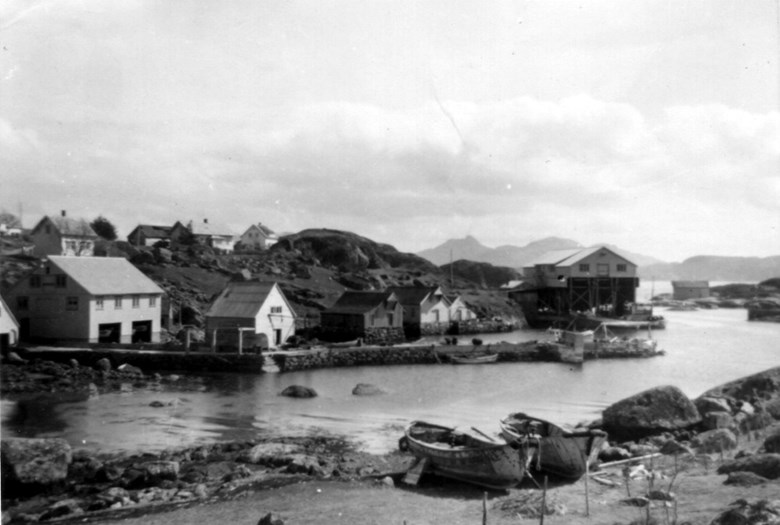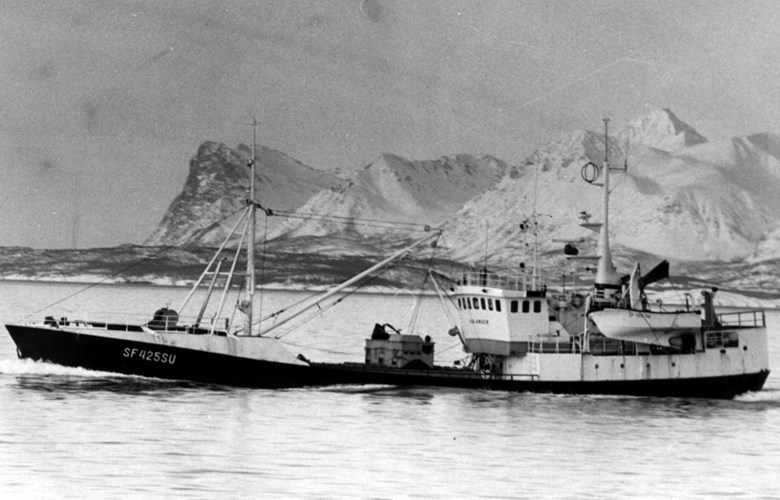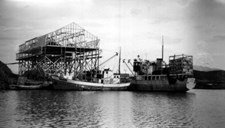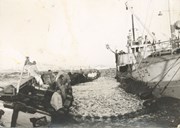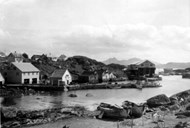Seine-drying facility with several functions
Around all of Solund, in between sea sheds, or on islets with reasonably navigable waters, there were large or small seine-drying facilities, adapted to the requirements: drying of salmon seines, summer and winter herring seines, heavy tuna seines. These facilities replaced the toil involved when the seines were dried on rocks. Alas, most of them are gone today. Still, the big facility at Færøy is easily visible in the landscape, with a tannery and huge second floor with storage and repair space.
During the hectic winter herring fisheries in the 1950s, there was a demand for services in tanning and drying the cotton seines, and in 1955, the facility was finished, built on a concrete quay measuring 32 by 20 metres. It was intended to be an industry independent of the fisheries.
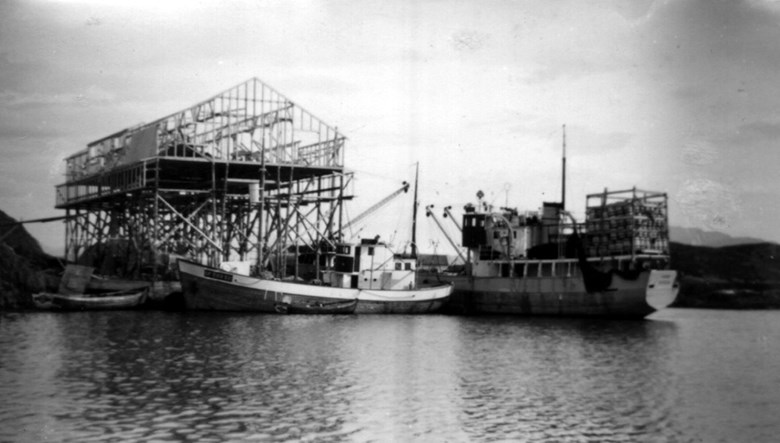
The fish vessel owner Br. V. Færøy
Færøy was a typical fishing village, based on farming and fishing in combination. People fished with seines, long-lines, and nets in the waters to the north and to the south of their homes. At Færøy, harbour conditions were bad, yet people here invested early in sailing vessels and motor vessels.
In 1950, Wilhelm T. Færøy and his sons Vilhelm, Bjarne, Torfinn, and Eyolf established the fishing vessel company of Br. V. Færøy, where Bjarne Færøy became the leader and driving force. Until around 1980, this company participated in several fisheries, and was involved in land-based industrial enterprises. At first, the winter herring fishery with shore seine was most important, but in 1929, Bjarne tried out a purse seine.

Many-sided activity
In 1935, Bjarne invested in a purse seine, and from then on, this was the equipment he used during the winter herring fishery. At first he was a hired master seiner with others, later he hired purse seine vessels, until the company bought one of its own. In 1950, the brothers equipped two winter herring seines on rented purse seine vessels. That same year they bought a "complete coal fish and tuna seine", and made the legendary big haul of 748 Atlantic bluefin tuna. The tuna seine was loaded on to "Nordsolund", while the "Hugnad" was an auxiliary, both vessels being their own property.
In 1955, Br. V. Færøy bought a part in the purse seine vessel "Henny", which was later named the "Ullafjell", after Bjarne became sole owner. This vessel took part in the winter herring fishery, as well as in the summer herring fishery off Iceland.
Growth and closing down
The skipper Bjarne Færøy and the skipper Roald Knoph from Møre worked smoothly together and were the architects and main shareholders of the company M/S "Sulanger" 1958, in which the Br. V. Færøy also participated. The vessel was a new 125-footer, later extended to 141 feet. After a few years, the winter herring fisheries off the Norwegian coast were over. Long-line fishing off Greenland then became the most important fishery for some time, then they had the vessel rebuilt for the North Sea ring net fishing. After this came a ten-year period of capelin purse seine fishing. While the "Ullafjell" caused the owner much anxiety and had to be scrapped, the Solund-registered "Sulanger" was a goldmine. 1983 was her last year at sea. The young people had chosen other occupations and were unwilling to take over the boat. So she was scrapped, and the company dissolved.
